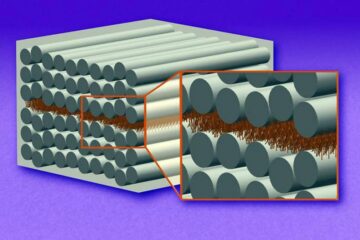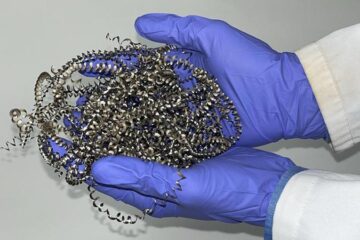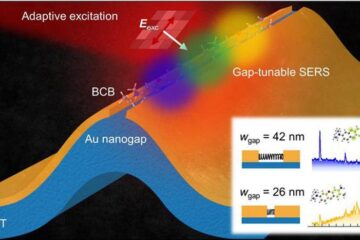Lizards change their diet to avoid predators

Many theoretical models had predicted this result, but until now there had been very few experimental trials and none in the case of saurians (reptiles). This experiment by Dror Hawlena, a researcher at Yale University in the United States, and Valentín Pérez-Mellado, a researcher at the University of Salamanca, has shown that certain animals, such as the insectivore lizard Acanthodactylus beershebensis, can change their behaviour and diet to avoid being eaten.
“When there is greater pressure from predators, the individuals tend to move less and catch more mobile prey from somewhat different groups. The lizards' diet and food-seeking behaviour changed significantly when we experimentally increased the predation pressure on them”, Pérez-Mellado tells SINC.
The study, published recently in the journal Oecologia, shows that reptiles threatened by predators become less selective and eat a more diverse range of foods, according to Pérez-Mellado, who was in charge of analysing their diet in Spain. The field work done over the summer months in 2000 and 2001 in the Negev Desert in Israel was carried out by Hawlena.
The scientists studied the species' diet data (trophic ecology) in two different situations – with and without predators. The Spanish researcher analysed the contents of 327 faecal pellets taken from 291 different lizards in order to reconstruct their diet. Ants were the prey most commonly consumed by the lizards, both by those at risk (69.32%) and the controls (67.12%), followed by insects such as termites (19.14% and 19.17% respectively). The difference could be clearly seen in the consumption of seeds, because the lizards hardly consumed these (0.52%) when they were under threat from predators.
An ingenious experiment in the desert
In order to reach these conclusions, Hawlena, who is from the University of the Negev in Israel, designed an experiment that made it possible to prove that the presence of predators affects the behaviour and ecology of this endemic species. “A series of artificial perches were placed in a desert site, which made it easier for shrikes (small birds of prey that catch lizards) to make use of the area, since they could detect the lizards from raised perches such as trees and bushes. These perches were not placed in a similar site nearby, which was used as the control site”, explains Pérez-Mellado.
References:
Hawlena, Dror; Pérez-Mellado, Valentín. “Change your diet or die: predator-induced shifts in insectivorous lizard feeding ecology” Oecologia 161(2): 411-419 agosto de 2009.
Media Contact
More Information:
http://www.plataformasinc.esAll latest news from the category: Life Sciences and Chemistry
Articles and reports from the Life Sciences and chemistry area deal with applied and basic research into modern biology, chemistry and human medicine.
Valuable information can be found on a range of life sciences fields including bacteriology, biochemistry, bionics, bioinformatics, biophysics, biotechnology, genetics, geobotany, human biology, marine biology, microbiology, molecular biology, cellular biology, zoology, bioinorganic chemistry, microchemistry and environmental chemistry.
Newest articles

“Nanostitches” enable lighter and tougher composite materials
In research that may lead to next-generation airplanes and spacecraft, MIT engineers used carbon nanotubes to prevent cracking in multilayered composites. To save on fuel and reduce aircraft emissions, engineers…

Trash to treasure
Researchers turn metal waste into catalyst for hydrogen. Scientists have found a way to transform metal waste into a highly efficient catalyst to make hydrogen from water, a discovery that…

Real-time detection of infectious disease viruses
… by searching for molecular fingerprinting. A research team consisting of Professor Kyoung-Duck Park and Taeyoung Moon and Huitae Joo, PhD candidates, from the Department of Physics at Pohang University…





















